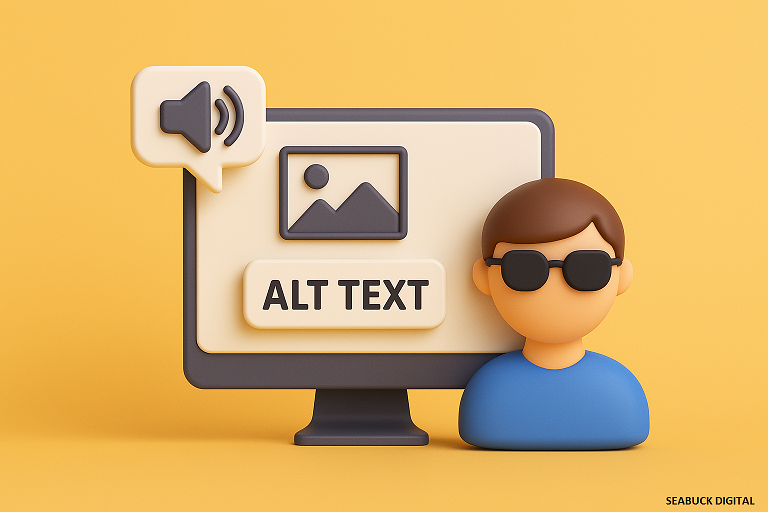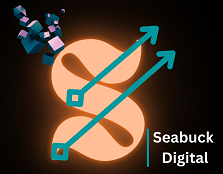
Understanding Alt Text Basics
What Is Alt Text?
Alt text, short for alternative text, is a short description added to images on a webpage. It’s like giving your images a voice. When images can’t be displayed, or for users who rely on screen readers, alt text steps in and paints a picture with words. Think of it as a helpful narrator guiding you through a story you can’t see.
Purpose of Alt Text in Digital Content
The main job of alt text is to make digital content accessible. It’s not just about SEO or filling in a blank field; it’s about ensuring everyone can understand the message an image is trying to convey. Whether it’s a product image, an infographic, or a funny meme, alt text helps communicate its purpose.
How Screen Readers Interpret Alt Text
Screen readers are the heroes here. They read aloud the alt text to users who are visually impaired, making images understandable through sound. Without alt text, screen readers might skip over images entirely, leaving out crucial details.
The Importance of Accessibility in the Digital World
Why Digital Accessibility Matters
In today’s digital-first world, access to information shouldn’t be limited. Accessibility ensures that everyone, regardless of ability, can interact with online content. It’s not just good practice—it’s a necessity.
Challenges Faced by Visually Impaired Users
Visually impaired users often rely on assistive technologies to navigate websites. But if images lack proper descriptions, they miss out on essential context, making the experience frustrating and incomplete.
The Role of Inclusive Design
Inclusive design means creating experiences that consider a diverse range of users from the start. Alt text is a small but mighty part of this approach, bridging the gap between visual content and non-visual users.
How Alt Text Enhances User Experience
Enabling Content Comprehension
Imagine listening to a podcast with sudden pauses for visual content you can’t see. That’s what browsing feels like without alt text. Good descriptions ensure users understand what’s going on, even if they can’t see the images.
Facilitating Better Navigation
Alt text also helps with navigation. For example, if a button is an image, the alt text can tell users what action it performs, like “Submit order” or “Read more articles.”
Creating Equal Access for All
At its core, alt text is about fairness. Everyone deserves to experience content equally, and descriptive alt text levels the playing field, making sure no one is left behind.
Best Practices for Writing Effective Alt Text
Be Descriptive but Concise
Good alt text strikes a balance. You want to describe the image clearly but avoid writing a novel. Think: “A golden retriever puppy playing with a red ball” instead of “Dog.”
Context Is Key
Always consider the image’s purpose. If it’s decorative, you might not need alt text at all. But if the image conveys important information, describe what matters most.
Avoiding Redundancy and Fluff
Skip phrases like “Image of…” or “Picture showing…” because screen readers already announce that it’s an image. Dive straight into the description!
When to Skip Alt Text
Not every image needs alt text. Decorative images, like background patterns, can have empty alt attributes (alt=””) so screen readers bypass them, keeping the focus on meaningful content.
Alt Text and SEO Benefits
How Alt Text Supports Search Engine Optimization
Besides helping users, alt text can boost your SEO game. Search engines crawl alt text to understand images better, which can improve your visibility in image search results.
Bridging Accessibility and Visibility
When done right, alt text serves both people and algorithms. It’s a win-win: you make your site more inclusive and attract more organic traffic at the same time.
Common Mistakes to Avoid in Alt Text
Overstuffing Keywords
It’s tempting to pack alt text with keywords for SEO, but resist the urge. Keyword stuffing makes the text unnatural and can harm both accessibility and search rankings.
Vague or Missing Descriptions
“Image” or “Photo” tells the user nothing. Be specific! Aim for descriptions that convey meaning and value, not placeholders.
Tools and Resources for Writing Alt Text
Accessibility Testing Tools
Tools like WAVE or Axe can help audit your website for accessibility gaps, including missing or poorly written alt text.
AI Tools for Alt Text Suggestions
Modern AI tools can even suggest alt text for your images. While they’re a great starting point, always review and tweak to ensure accuracy and context.
The Future of Alt Text and Digital Accessibility
Advances in AI and Automation
AI is rapidly improving, making it easier to generate useful alt text automatically. But human oversight remains essential to capture nuance and context.
Moving Towards a More Inclusive Web
The future looks bright as more designers and developers prioritize accessibility. Alt text will continue to play a vital role in building a web that truly includes everyone.
Conclusion
Alt text might seem like a small detail, but its impact is huge. For visually impaired users, it’s the bridge that connects them to the visual world of the web. It not only makes content more accessible but also enhances SEO, improves user experience, and promotes inclusivity. By taking a little extra time to write thoughtful alt text, we open doors for millions of users who might otherwise be left in the dark. So next time you upload an image, ask yourself: “What story does this picture tell?” Then, let your alt text tell it.
FAQs
Can Alt Text Benefit Users Without Disabilities?
Absolutely! Alt text helps when images fail to load, or for users in low-bandwidth situations, ensuring the message still gets through.
How Long Should Good Alt Text Be?
Aim for a sentence or two. Focus on clarity and relevance without going overboard.
Does Alt Text Replace Captions?
Nope! Captions and alt text serve different purposes. Captions are visible to all, while alt text is primarily for screen readers.
Are There Legal Requirements for Alt Text?
Yes, many regions have accessibility laws requiring alt text, like the ADA in the U.S. and the WCAG guidelines globally.
How Can I Test If My Alt Text Works?
Try using a screen reader! It’s the best way to experience your content the way visually impaired users do and spot any improvements needed.
Read More:

